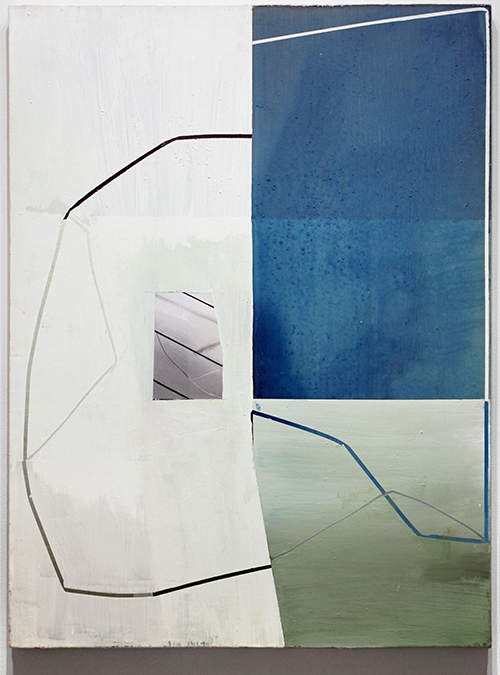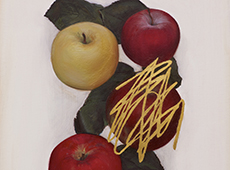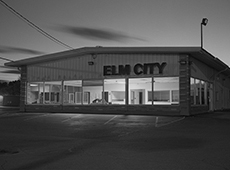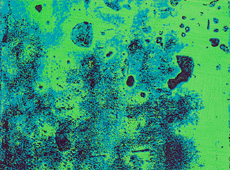Process is very important, but process alone can often end up being too much of a “period piece novelty.” And I wanted to avoid that which was easy for me to do because I‘m not a process artist. I had started building up layers of paint using just a mixture of latex, gesso and what was then called…

Gordon Moore, “Fragment (with blue),” 2013. Oil, pumice and latex on canvas. 40 x 30 inches. © Gordon Moore. Courtesy of Betty Cuningham Gallery.
IV
One of the problems I had run into over the years with painting was that I had grown very dissatisfied and somewhat frustrated with the “dryness” of canvas and so I started working on ways to get around that. At first I had built-up layers of paint to a thickness that enabled me to cut through it with a dull matt knife and literally pull the paint off the canvas as if skinning the hide off a mule. I did this for many years and I liked the process because it was a different way to make a painting and it yielded a straight edge that was cut not taped. But it was laborious, very physical, and labor intensive and eventually the work it yielded seemed too formally familiar and “process heavy.” Richard Serra said a very good thing in an interview years back with Lizzie Borden about drawing, that though formal language in art is very important, if the formal language ends up being the dominate content in the art, it becomes too susceptible to obvious formal analysis, too bereft of enigma. Process is very important, but process alone can often end up being too much of a “period piece novelty.” And I wanted to avoid that which was easy for me to do because I‘m not a process artist. I had started building up layers of paint using just a mixture of latex, gesso and what was then called Rhoplex (it’s now called Acrylex). But the mixture very often yielded a surface that was too glossy, which I did not like. So I started adding pumice into the mix, originally as a dulling agent. And the more I did that, the more I realized that enough layers of that mix created what I came to call a “paint slab” that completely covered the surface of the canvas and eliminated the dryness problem. It was very tough (an important aspect for me) and could be made to approximate the smooth, but just slightly gritty surface of a hot press piece of paper, and that was what I wanted. I stopped cutting paint and started pouring paint over the “slab” and found that by varying the amount of pumice I could approximate the separation of particles of dirty developer over photo-emulsion paper by the separation of poured paint particles over the grit of pumice on “the slab.” It takes about 4-5 days with the painting on the floor to build up “the slab” but that’s what I paint on now and that’s why I use pumice.
spacer
Up next:
“…if the formal language ends up being the dominate content in the art, it becomes too susceptible to obvious formal analysis, too bereft of enigma.”
Our conversation with Gordon Moore continues.
spacer
.
.
.
.
Subscribe to Tilted Arc
If you like this story, please consider subscribing. We are sticklers for privacy.
We will never sell or share your e-mail address.



